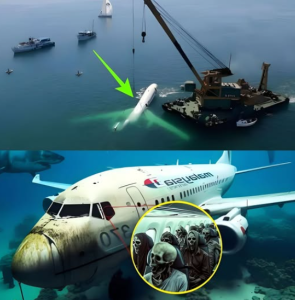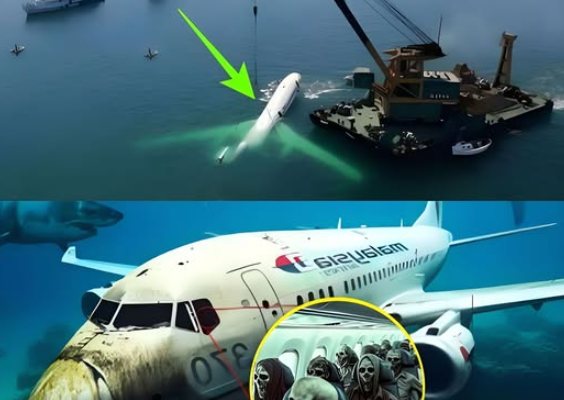🛫 Background — what is MH370 and how it vanished
-
MH370 disappeared on 8 March 2014, a Boeing 777 en route from Kuala Lumpur to Beijing with 239 people on board (227 passengers + 12 crew). Wikipedia+1
-
The plane’s last regular radio contact was about 40–45 minutes after takeoff. Reuters+1
-
Shortly thereafter, its transponder turned off. But military radar later tracked it flying west over the Malay Peninsula, then northwest over the Andaman Sea, before it vanished from radar coverage. Wikipedia+1
-
Satellite-communication (Inmarsat) data — automated “pings” from the aircraft — suggested that MH370 remained airborne for many more hours and likely ended up in the southern Indian Ocean, far off its original route. Wikipedia+1
-
Based on that data, it is widely believed the plane crashed into a remote part of the Indian Ocean. Wikipedia
That abrupt and mysterious deviation from the flight plan — plus the total lack of communication and the vastness of the ocean — turned MH370’s vanishing into perhaps the greatest aviation mystery in history.
🔎 What we do know — debris, past searches, and why the mystery persists
-
Over the years, pieces of debris believed to come from MH370 have washed ashore on coasts around the Indian Ocean. Reuters
-
But no substantial part of the main wreckage — fuselage, wings, engines, or black boxes — has ever been recovered. That means we don’t have conclusive physical evidence of where or how MH370 ended. Wikipedia
-
The first large-scale underwater search (2014–2017), led by Australia along with other countries, scanned about 120,000 km² of ocean floor without success. Reuters+1
-
A second attempt, by private company Ocean Infinity in 2018 — based on a “no-find, no-fee” arrangement — also found nothing. Wikipedia
In short: while the Inmarsat data provides a compelling indirect “final arc” for MH370’s path — and debris linked to MH370 has been found — the lack of a major wreckage discovery means we still don’t know exactly what happened — and where the plane really lies.
🚢 The 2025 search — what changed, why hopes were renewed
-
In December 2024, the government of Malaysia approved a plan to resume searching for MH370, based on a new proposal from Ocean Infinity. WHRO Public Media+1
-
The renewed search targets a 15,000 km² area of the southern Indian Ocean — noticeably smaller than the original 120,000 km² — informed by updated data analysis and new models. Reuters+1
-
Under the agreement, Ocean Infinity would be paid $70 million only if they find the aircraft or compelling wreckage — a “no-find, no-fee” deal. WHRO Public Media+1
-
The company deployed an advanced sonar/subsea-robotic search vessel — using modern autonomous underwater vehicles (AUVs) to scan the seabed with greater resolution than previous surveys. The Economic Times+2ABC+2
-
Many experts and investigators viewed this as perhaps the most promising effort yet — with improved technology and refined search zones increasing the odds of success. The Economic Times+2The Economic Times+2
In early 2025, this relaunch reignited hope that MH370 might finally be found — perhaps even its black boxes, which could reveal what happened in its final moments. Reuters+1
🚫 Why “Final Moments Found” is very likely false — what’s not credible right now
Despite the renewed search — and despite occasional sensational claims — there is no credible evidence today proving that MH370’s “final moments” have been found. Key reasons:
-
The most recent search effort was suspended in April 2025, reportedly due to seasonal weather conditions in the Indian Ocean. Wikipedia+2Al Jazeera+2
-
Officials have said the operation may resume by end of 2025 — but as of now, no wreckage, no fuselage, no black-box signals have been reported. Wikipedia+2Al Jazeera+2
-
An alleged claim by an oil-rig worker that he saw the plane “engulfed in flames” in 2014 has resurfaced recently — but that claim remains unverified, is uncorroborated by radar or satellite data, and is inconsistent with what is known about MH370’s last confirmed flight path. Tech Business News+1
-
Experts continue to warn that any theories based on fragmentary debris, anecdotal sightings, or social-media “analyses” (e.g. satellite-footage speculation, remote videos, unverified witness stories) are not sufficient to claim the mystery solved — especially given the vast, deep, and rugged seabed involved. The Economic Times
In short: at present, no authoritative source or credible investigation has produced evidence that would establish the “final moments” of MH370 with any certainty. Any headline declaring that MH370’s final moments have been found should therefore be treated with extreme skepticism.
🧭 What remains — theories, expert opinions, and next steps
Because the wreckage remains unfound — and because satellite/communication data provide only indirect clues — multiple theories and scenarios remain open:
-
Some experts emphasize that a “controlled ditching” or slow loss-of-fuel ending in a gentle ocean impact remains plausible. New York Post+2Wikipedia+2
-
Others argue for possible hijack or deliberate diversion — perhaps to a remote airstrip or secret landing — though no credible evidence has emerged to support such scenarios. The Economic Times+1
-
A few more speculative ideas continue to surface (social-media “satellite footage,” alleged eyewitnesses, unverified “teleportation” or UFO theories), but none meet basic standards of proof — and aviation experts dismiss them as implausible. The Economic Times+1
-
Some experts are calling for a rethinking of search strategy: due to seabed topography, sediment depths, ocean currents, and potential wreckage burial, previous assumptions about where MH370 might lie may be flawed — and the next search may need to combine sonar scanning with geological and drift-analysis models to stand a better chance. The Economic Times
Because visibility underwater declines quickly, and ocean sediment can hide wreckage for decades — or bury it entirely — some believe MH370 might remain virtually undetectable unless technology improves dramatically or new “ground truth” (e.g. seabed samples, acoustic signals, tectonic/geological evidence) emerges.
📌 Why the “final moments found” story keeps resurfacing — and why media / public skepticism matters
The disappearance of MH370 has haunted countless families, investigators, aviation-experts and the public — so there’s intense demand for closure. That in turn creates fertile ground for:
-
Sensational headlines — promises of “final moments found,” “breakthrough,” or “plane located at last” draw clicks and attention, even when the underlying evidence is weak or unverified.
-
Unverified claims and speculation — anecdotal witness statements, remote-sensed images, social-media “analysis,” or reinterpretations of old data can sometimes appear convincing, but often don’t stand up to scrutiny.
-
Pressure to deliver closure — and the risk of false hope: For relatives of the missing, any new claim can reignite hope — but repeated disappointments can prolong trauma.
Because of this dynamic, it remains crucial to demand transparency, robust evidence, and independent verification before accepting any new claim as definitive. The history of MH370 has shown how easy it is for misleading narratives or mistaken interpretations to spread.
✅ Where things stand — what is reasonable to expect next
As of late 2025:
-
The most recent search by Ocean Infinity remains suspended, not concluded. Wikipedia+2WHRO Public Media+2
-
No credible wreckage, black boxes, or verified underwater signals have been reported.
-
Experts believe further searches might still succeed — but success is uncertain and dependent on advances in technology, favorable ocean-weather conditions, and perhaps a rethinking of search zones and assumptions. The Economic Times+1
-
Given the lack of strong evidence, headlines claiming “final moments found” remain deeply irresponsible and misleading, at least based on all publicly available data.
🎯 Conclusion: MH370 remains missing — and “final moments found” is not true
The story of MH370 — its sudden disappearance, the massive international search efforts, the fragments of wreckage, and the enduring grief of families — remains one of the most tragic and mystifying in modern aviation history.
While ongoing searches, new technology, and refined data analysis have kept hope alive, the core reality hasn’t changed: we still don’t know exactly what happened to MH370 — where it lies, how it ended, or why it deviated so far from its path.
Until verified wreckage is found, or black-box recordings recovered, any claim that we have located MH370’s “final moments” must be treated as speculation — however tempting or sensational it may seem.
If you like, I can run through top five most credible theories today — and which seem most likely given what we actually know.



